How I Make Art Is Different
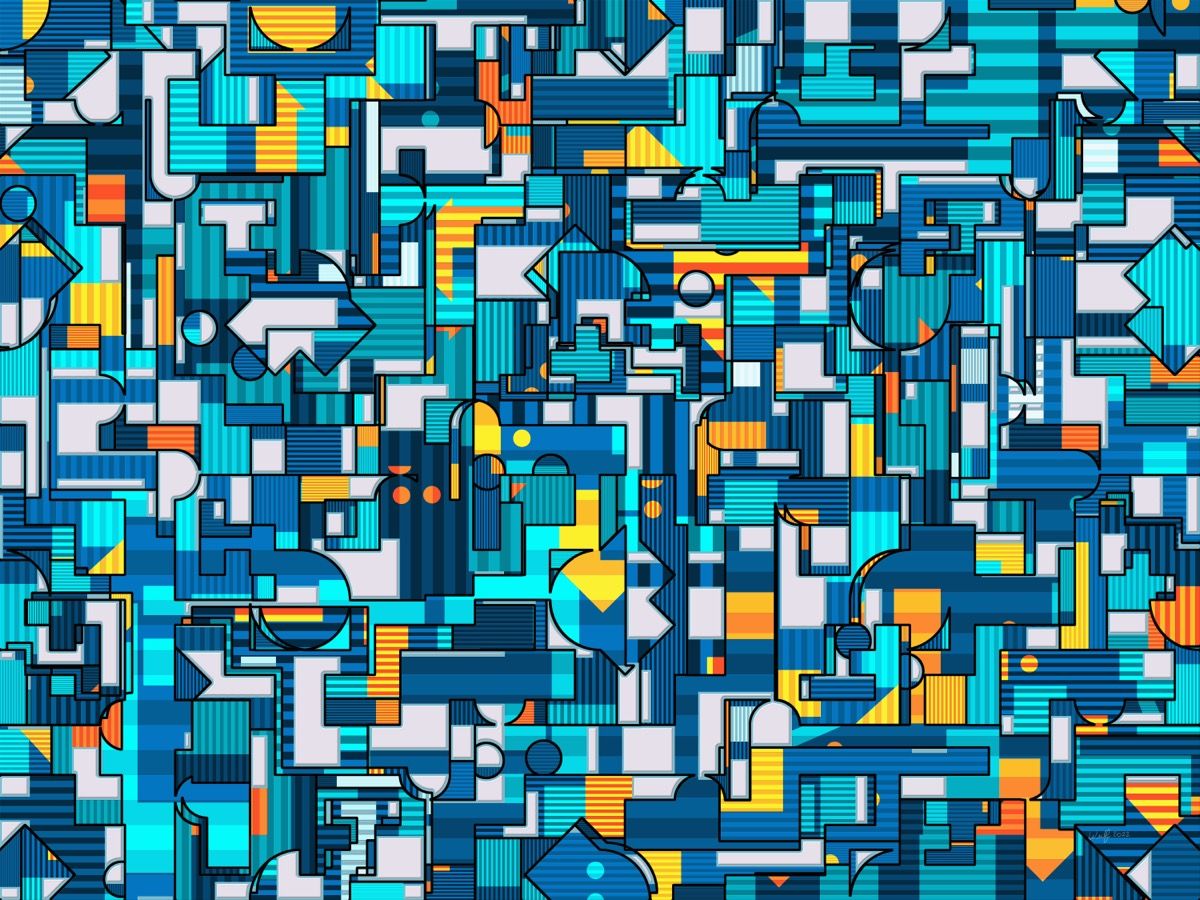
My approach to making art is unlike anyone I know; although my work is based on generative art, the process and the result are unique.
Given my unusual start as an artist, I leveraged what I knew and how I approached my career as a programmer to forge something different. Art history shows that being different is not an easy road to follow; however, making art similar to everyone else is easy but ultimately less satisfying. In my case, having little ability to draw in a traditional sense means making unique abstract art can become a strength.
My works begin with a vague idea, a seed to start the process, then lead me on an evolutionary journey until I find satisfaction or decide it's a dead end. Everything is built layer by layer, generally using my various generative tools (written by me from scratch) combined with multiple digital effects, often in a loop, combining layers until something "interesting" happens. Sometimes I start with a tool, sometimes with a digital drawing or painting, and occasionally I may use a photograph as the seed. Often the resulting work may be substantially different than the seed and may even lose all the details of how I built it (there are works I'd love to expand on, but I've forgotten how I made them!)
My works are generally from 50 to 200+ megapixels, i.e., 20" x 20" up to 48" x 48" in size, designed to be printed at 300 DPI. While I play with AI tools, they are not all that useful. They make tiny images (around 1 megapixel), are very bad at abstraction, and are very limited in successful subject matter (look at demos, you mostly see faces and fantasy characters). My kind of art cannot be done using today's AI art tools (based on diffusion, as all are today) and certainly not as big as my works are.
Generative art is painting using programming instead of paint. Most generative artists generate the final work entirely by programming, with minimal or no additional work (and often target NFTs these days). For me, generative art is a tool to create content I can combine with digital processes, often in a loop, which evolves until I am happy with the result. It's never generating the result directly. You could consider my process similar to collage, except I create all the content, which may change over time, and there are more layers.
The history of generative art goes back to the early days of computing in the 1960s, although until recently, the limitations of computing power restricted what you could do. Today there are incredibly powerful computers available to anyone, but most people limit their use to tools written by others. Writing complex generative tools is second nature for me; even though I never did art until five years ago, writing complex code is what I spent most of my life doing, so I am adapting my new needs to what I know best. I am unafraid to try something new since my career was always about new things. My study of art history (also in the past five years) shows many artists became successful, not because they followed a similar path to everyone else but went their own way, even though it was often a long or difficult path.
Every work I do differs from previous work, although sometimes I cycle through variations of a common idea. Often I don't remember exactly what I did (I never save the document where the art was built, only the result). My goal with every work is to wind up with some "interesting"—difficult to define but something I feel inside. I do like some work more than others but often save one even if it is not as exciting as I would like. I have no idea what others would like; why limit work only to what pleases me.
Some works are fairly simple and take little time to build beyond the time to write a new tool. This work, for example, uses a single tool used multiple times.
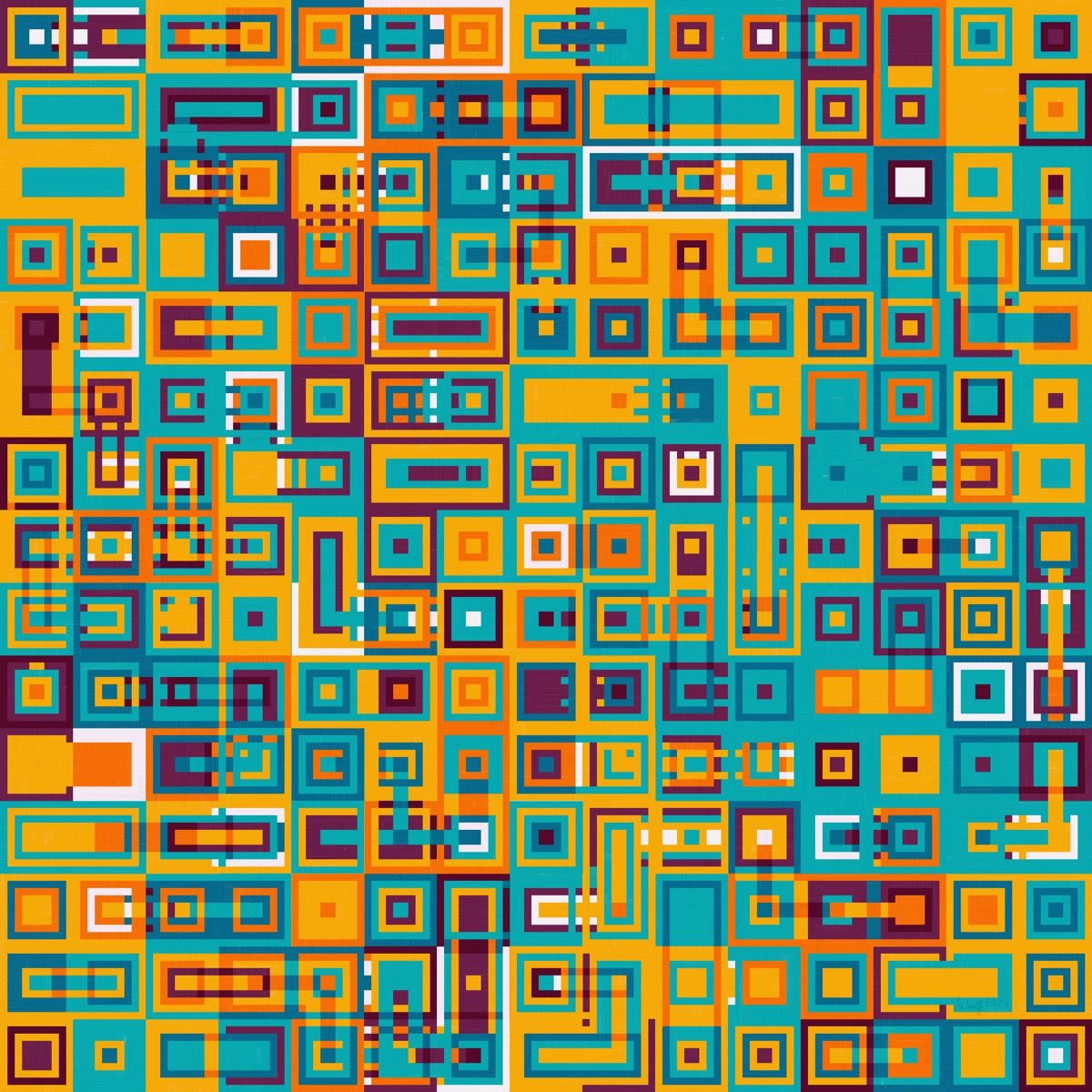
This work is more complex, combining multiple tools and many digital effects.

This work from last year (which hangs in my bedroom) combined a digital drawing modified by a complex process, inlaid in a set of curves built by my most powerful tool.
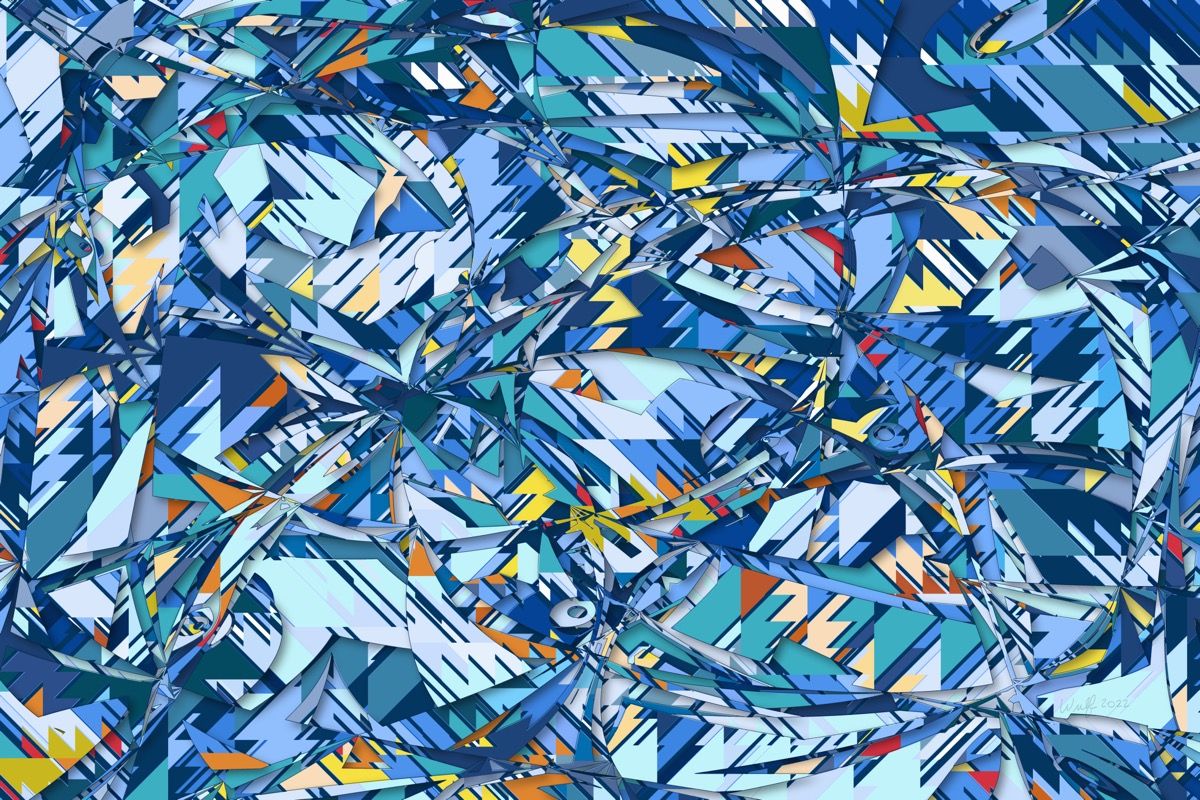
Some works seem simple but are quite complex to get right; I often have to run tools many times until the result is pleasing to me. Some of the tools can make amazing results but are also prone to making chaos and noise! The good stuff lives on a knife's edge. This work took a lot of time to be balanced.
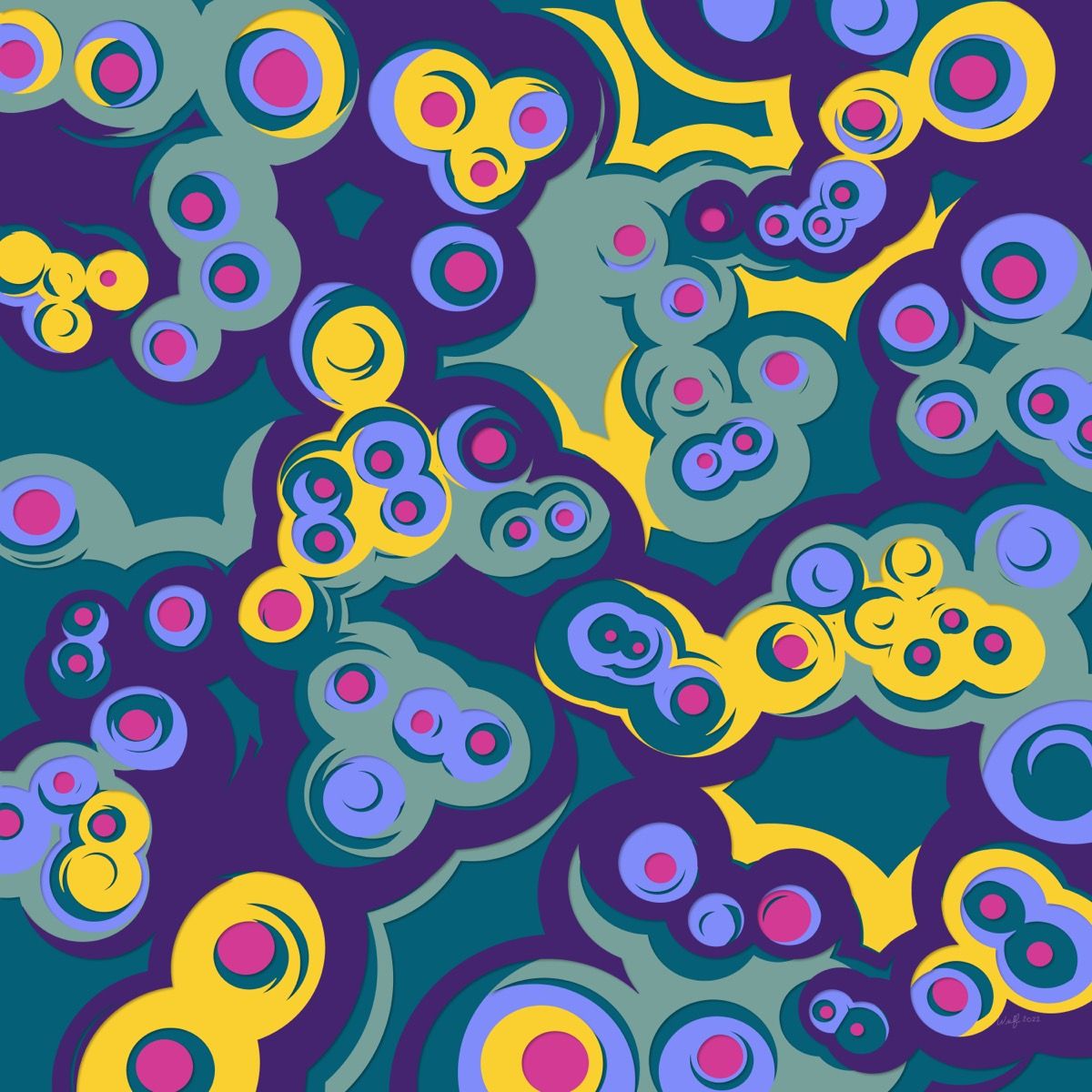
When I start with a photograph, I often try a lot of variations of tools to see what kind of abstraction I can create. This one uses a common generative technique (flow fields) to create an oddball painting effect. The result is ambiguous—is that an ocean or a valley?

Occasionally I don't use any tools but only digital effects to make a "painting." This strange work is actually me!
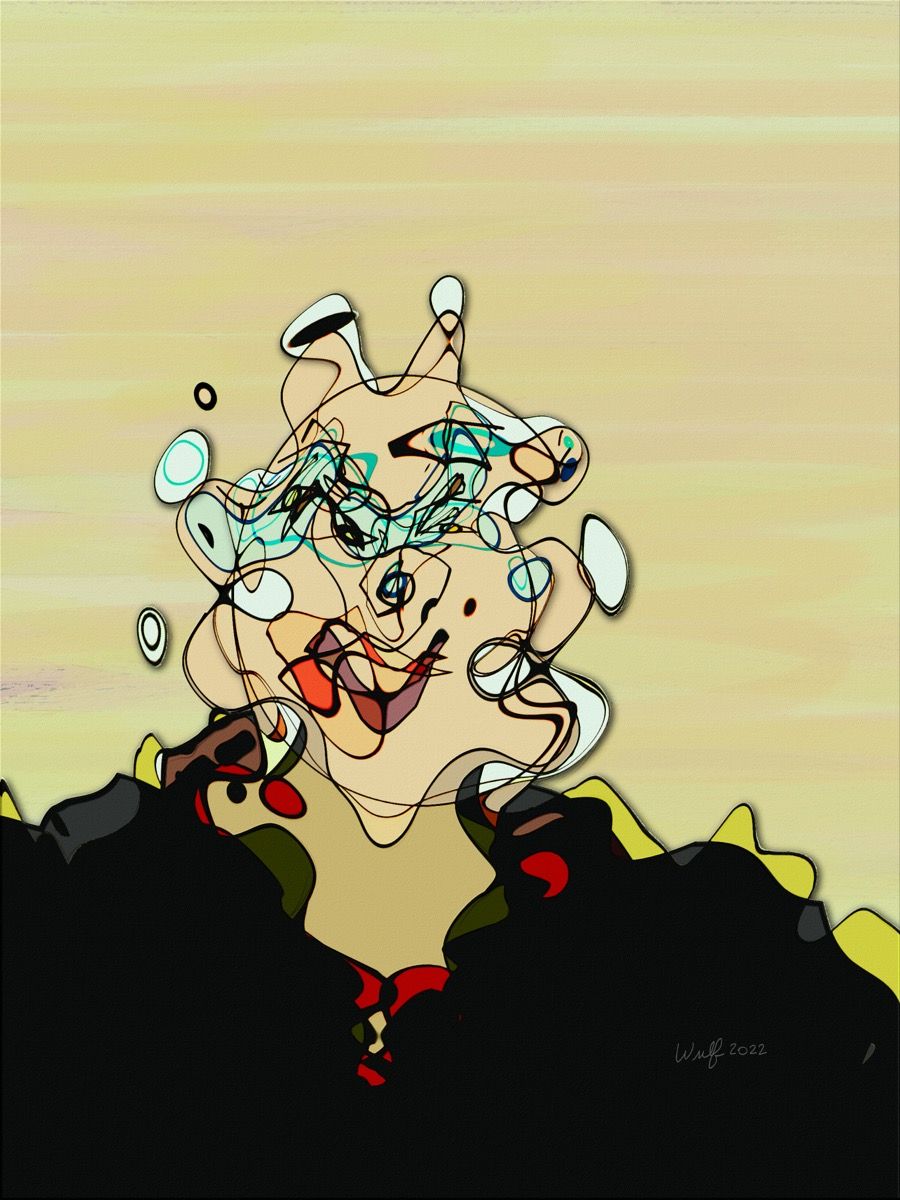
I still have an extensive set of ideas I have not even started. Combining powerful tools unique to me and a long list of digital effects plus anything else I can find will result in more "interesting" works. I have only scratched the surface of combining generative tools, digital effects, and digital painting.
You can see all of my work on my art website.
